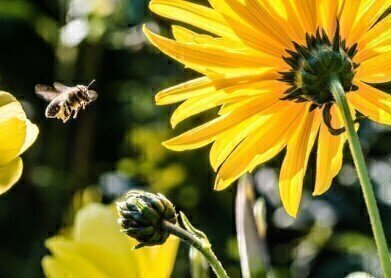Air Monitoring
How Do Bees Help Monitor Air Quality?
Aug 17 2016
Bees have always been important to us. They’re essential for pollinating crops, as well as producing delightful honey. However, some scientists seem to have found a new use for the black and yellow flying insects. They’re using bees as a means of monitoring air quality. So how does that work? Read on and we’ll explore the new use for bees.
Sticky bodies
Scientists from the Natural History Museum got the idea from the sticky quality of bees’ bodies. It’s a central part of how they pollinate plants. Their tiny bits of fur build up static electricity, which allows them to attract small particles. What this means is bees will draw in particles from the air as they fly around in the day. Using the particles picked up by the bees, scientists can get a really good sample of what’s in the air.
Bees fly up to 2.5km a day in the area around their hive. The first instance of the bees being used was in Sardinia. Until recently, mines have operated in an industrial area of the Italian island. These mines have left tiny particles in the surrounding atmosphere, discharged from the exposed ore materials. Bees were an ideal tool in the experiment to test the air quality. Because they sample airborne matter, it gives scientists a better idea of the source.
Airline bees
The Vaclav airport in Prague also use bees to monitor air quality, but in a different way. They have hives at the airport, which are home to more than 300,000 bees. With around 100kg of honey being produced every year, the airport can monitor the quality of the bees’ produce as a means of testing the air quality. The small size of the bees makes them perfect for the job at hand. They are too small to interfere with airline operations in a way that birds could.
Mineralogist, Dr Christian Mavris, thinks bees could be used in the British countryside too. With several areas that used to house coal and lead mines, the countryside air could actually be more polluted than we think. “We often have an assumption that the air in the countryside is very good but that is probably not a precise estimate”
Air pollution
Air pollution can be dangerous. Not only does it affect the atmosphere and wildlife, it also affects people. People can be breathing in polluted air every day without knowing. South Asia is home to a quarter of the world’s population, but have its anthropogenic emissions caused a catastrophic rise in nitrogen oxides in the air? ‘Assessment of NOx Pollution over Megacity Delhi’ looks explores the situation.
Digital Edition
IET 34.2 March 2024
April 2024
Gas Detection - Biogas batch fermentation system for laboratory use with automatic gas analysis in real time Water/Wastewater - Upcycling sensors for sustainable nature management - Prist...
View all digital editions
Events
Apr 30 2024 Melbourne, Australia
Apr 30 2024 Birmingham, UK
May 03 2024 Seoul, South Korea
May 05 2024 Seville, Spain
May 06 2024 Minneapolis, MN, USA


















